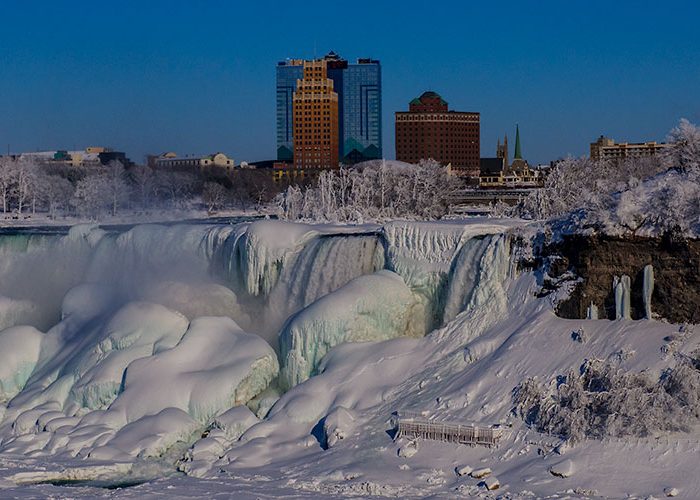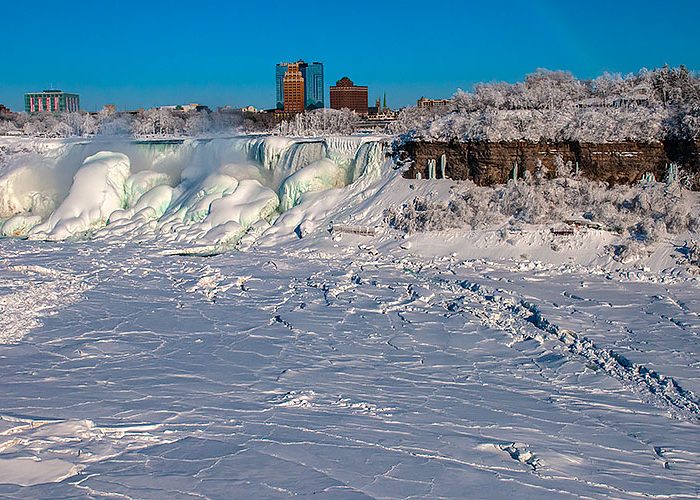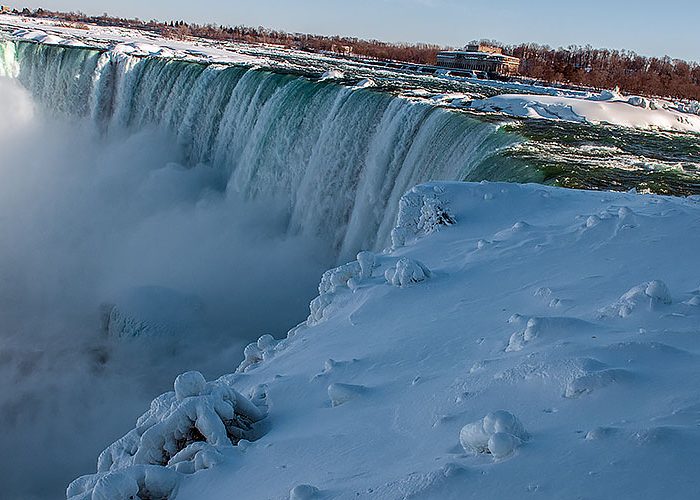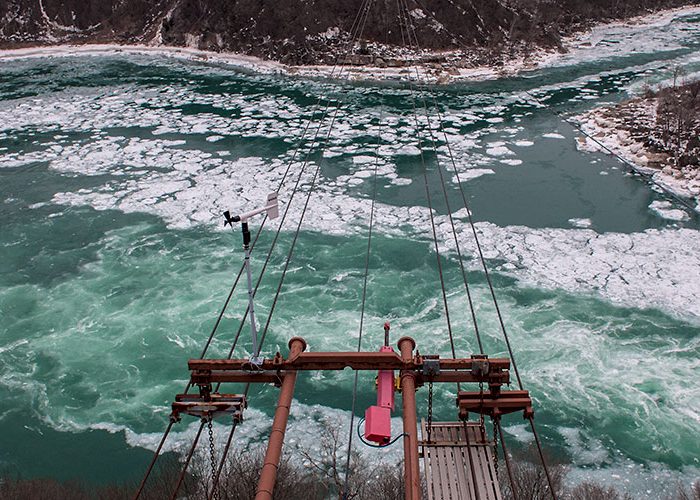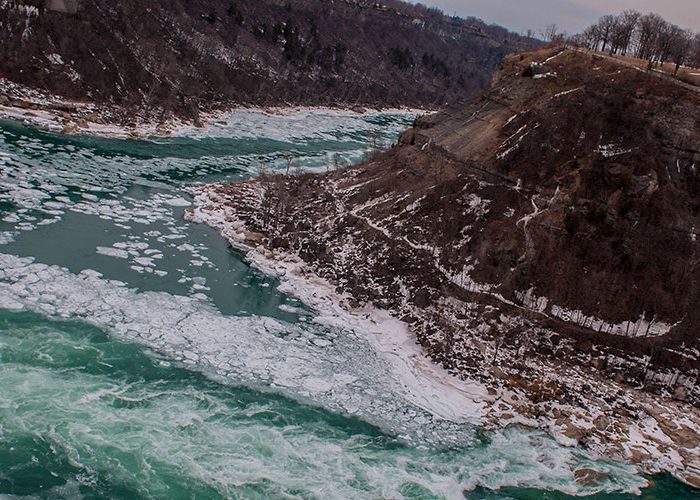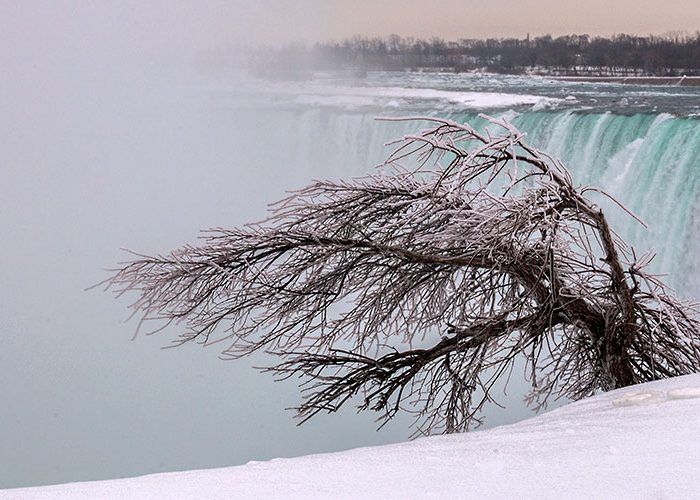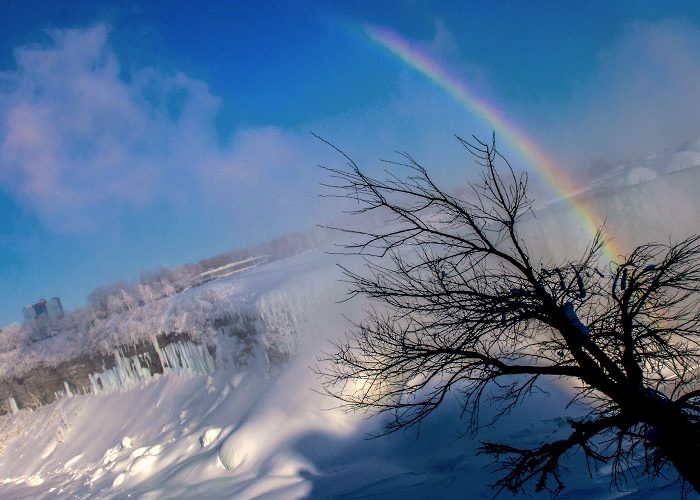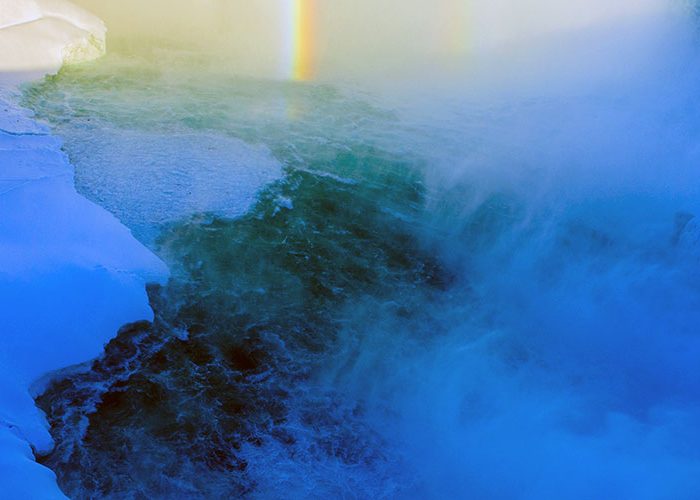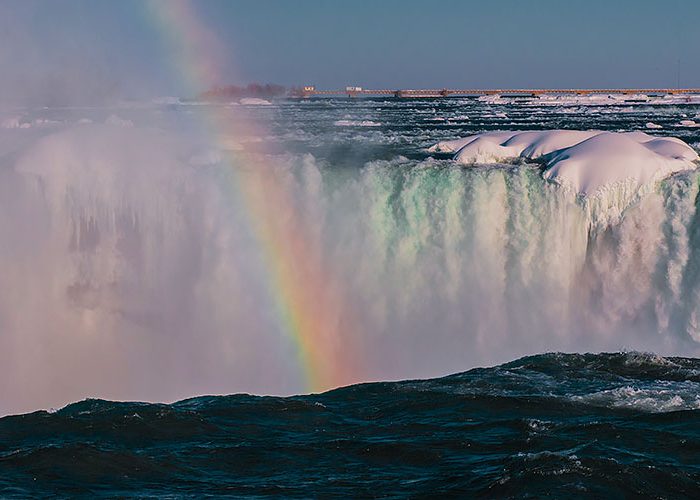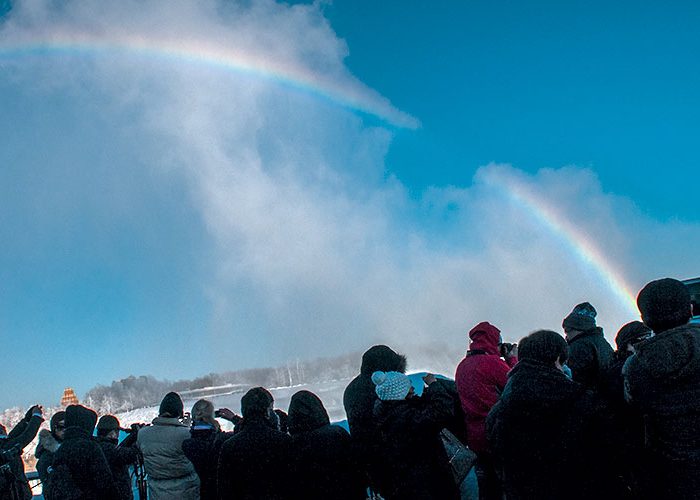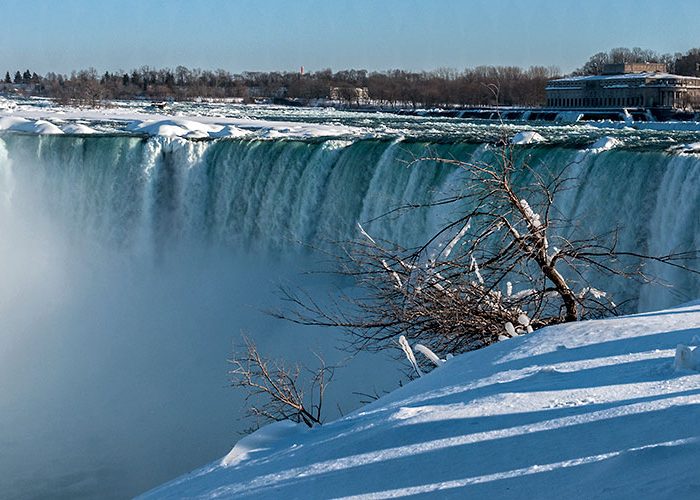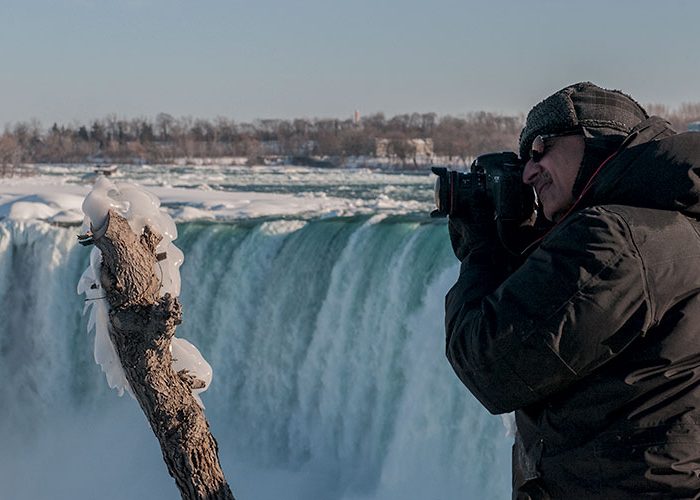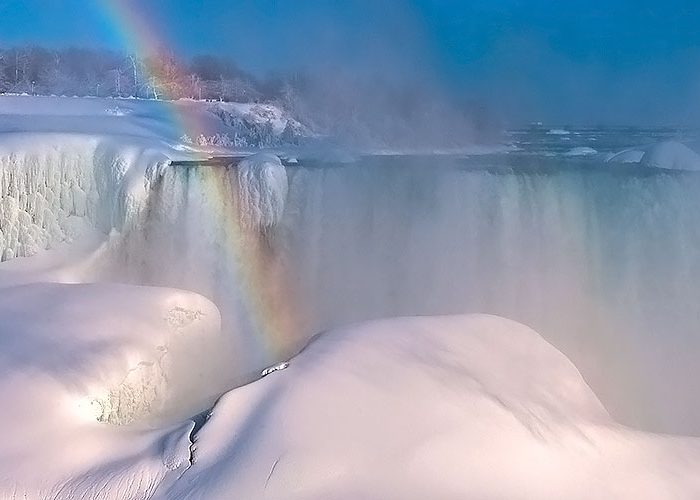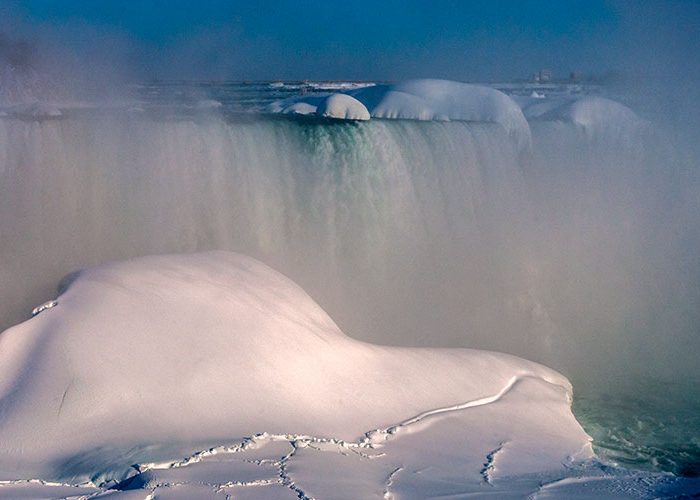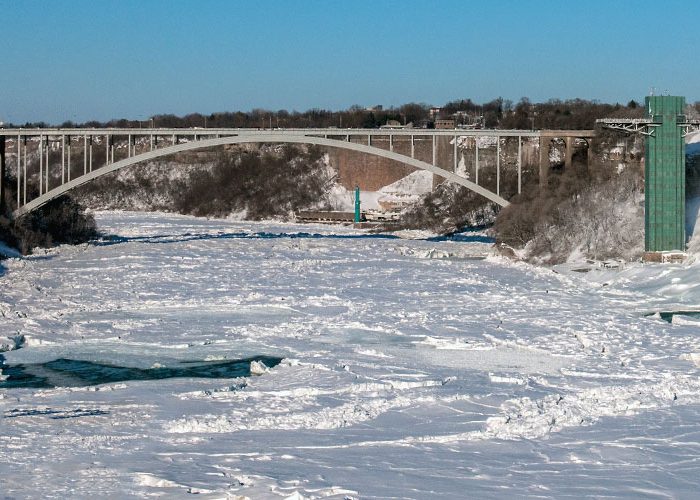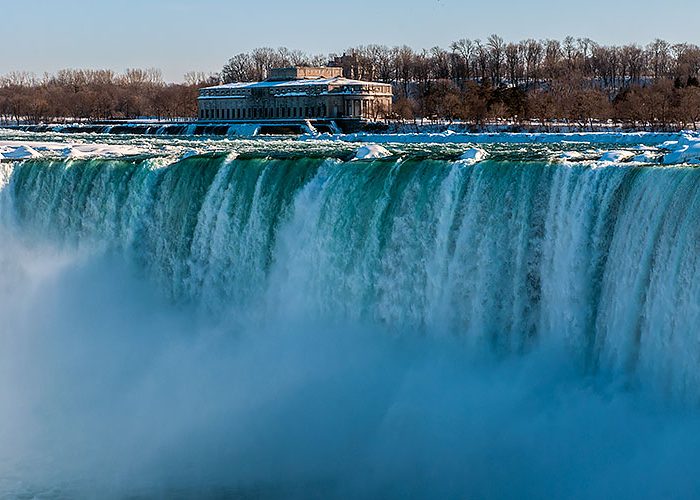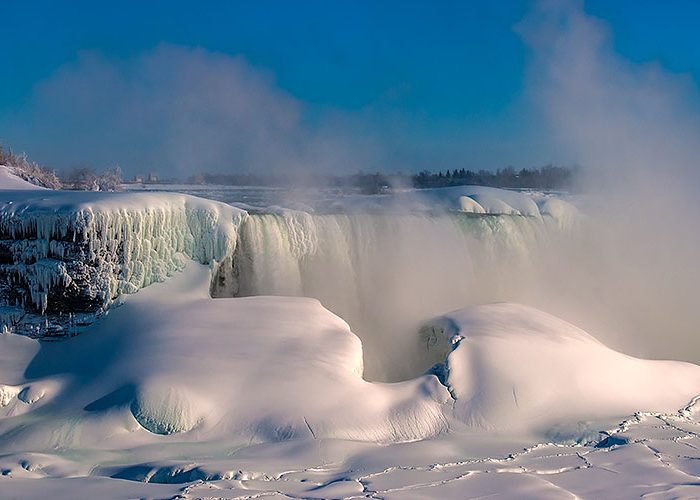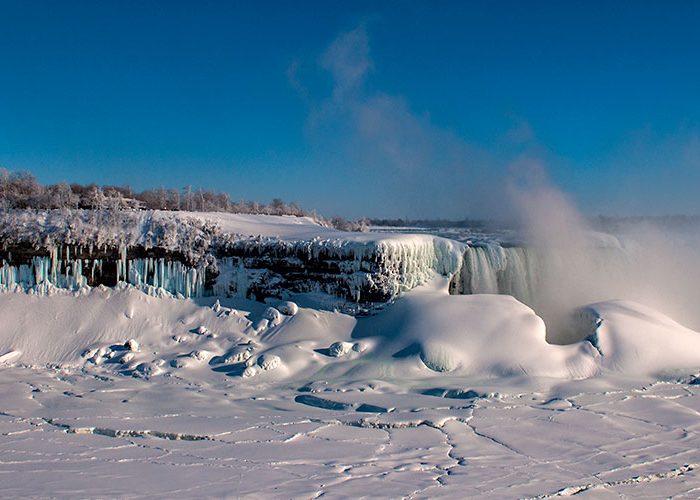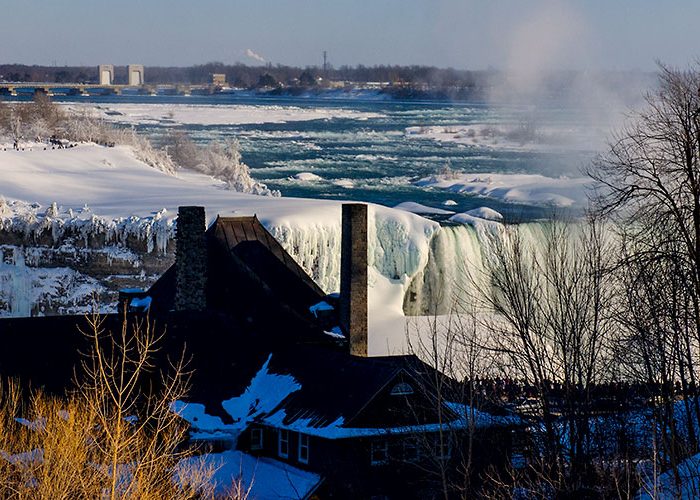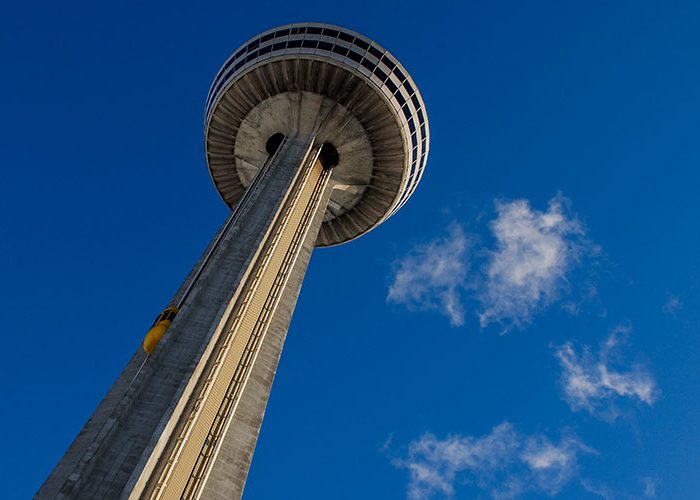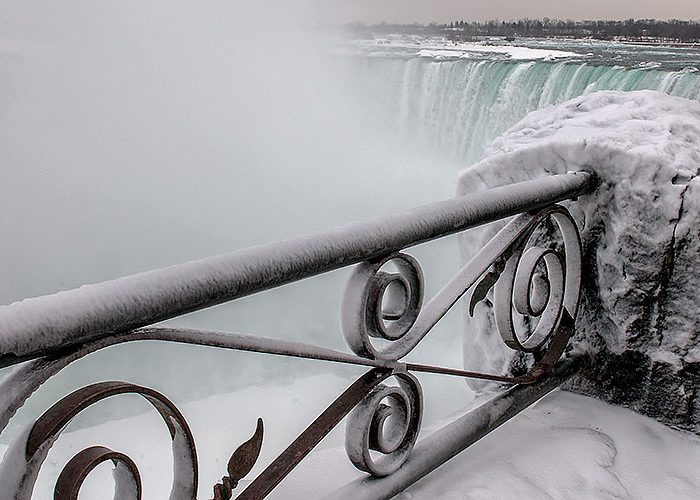Frozen Niagara Falls – I did see this… even more awesome when you see all the trees covered with ice. The Niagara River, and the entire Great Lakes Basin of which it is a part, is a legacy of the last Ice Age. 18,000 years ago, Southern Ontario was covered by ice sheets two to three kilometers thick.
As the ice sheets advanced southward, they gouged out the basins of the Great Lakes. Then as they melted northward for the last time, they released vast quantities of melt water into these basins. Our water is “fossil water.” Less than one percent of it is renewable on an annual basis, the rest leftover from the ice sheets.
The Niagara Peninsula became free of the ice about 12,500 years ago.
As the ice retreated northward, its melt waters began to flow down through what became Lake Erie, the Niagara River and Lake Ontario, down to the St. Lawrence River and on to the Atlantic Ocean. There were originally five spillways from Lake Erie to Lake Ontario. Eventually, these were reduced to one, the original Niagara Falls, at the escarpment at Queenston-Lewiston. From here, the falls began its steady erosion through the bedrock.
However, about 10,500 years ago, through an interplay of geological effects including alternating retreats and re-advances of the ice, and rebounding of the land when released from the intense pressure of the ice (isostatic rebound), this process was interrupted. The glacial melt waters were rerouted through Northern Ontario, bypassing the southern route. For the next 5,000 years, Lake Erie remained only half the size of today, the Niagara River was reduced to about 10 percent of its current flow, and a much-reduced falls stalled in the area of the Niagara Glen.
About 5,500 years ago, the melt waters were once again routed through Southern Ontario, restoring the river and falls to their full power. Then the falls reached the whirlpool.

